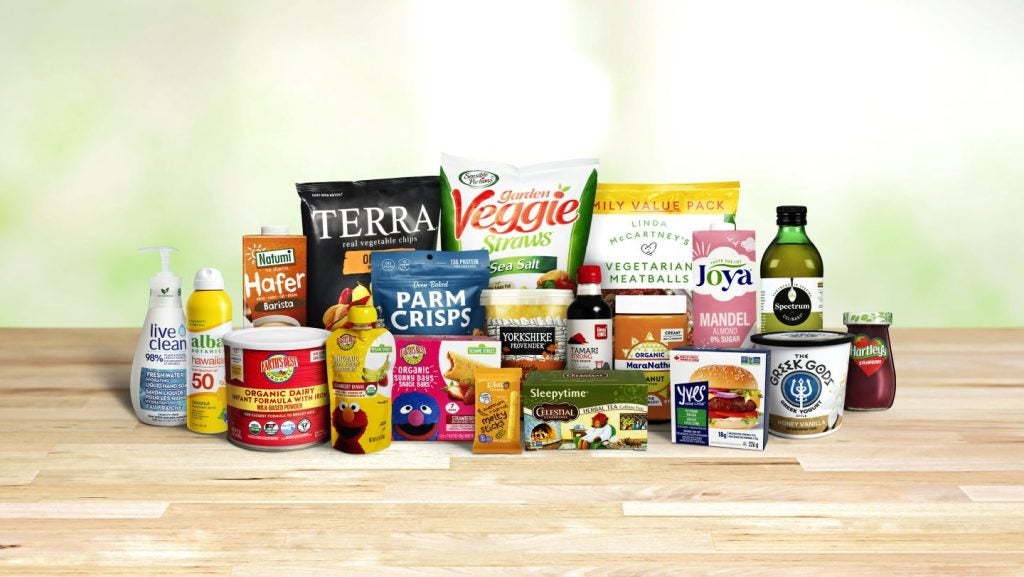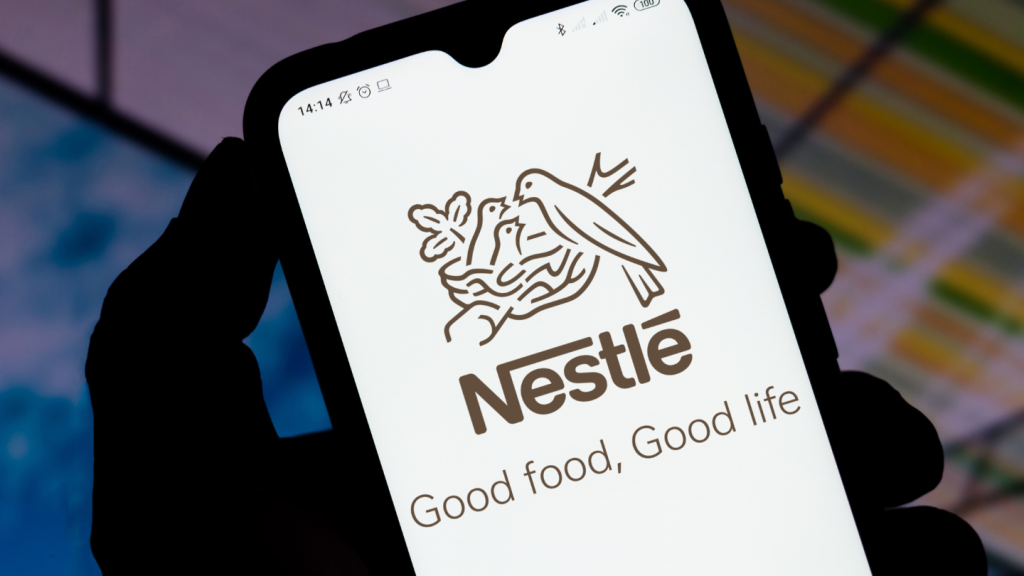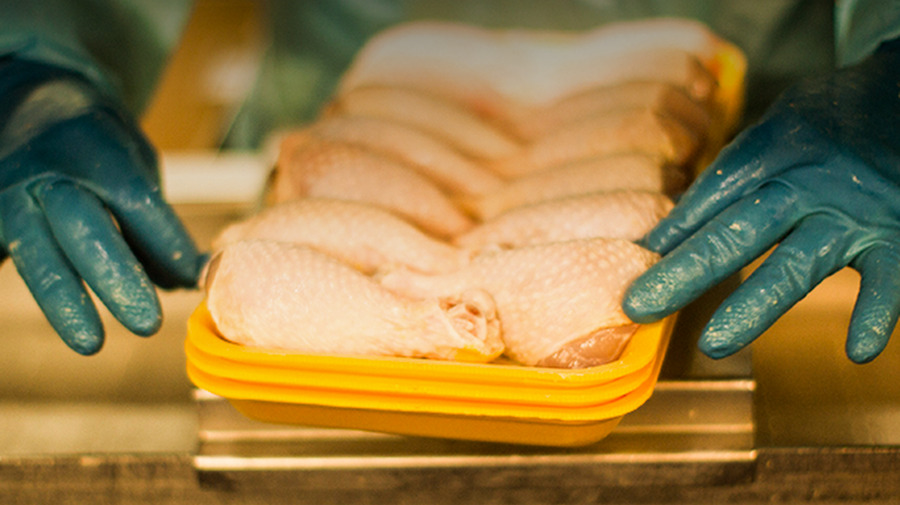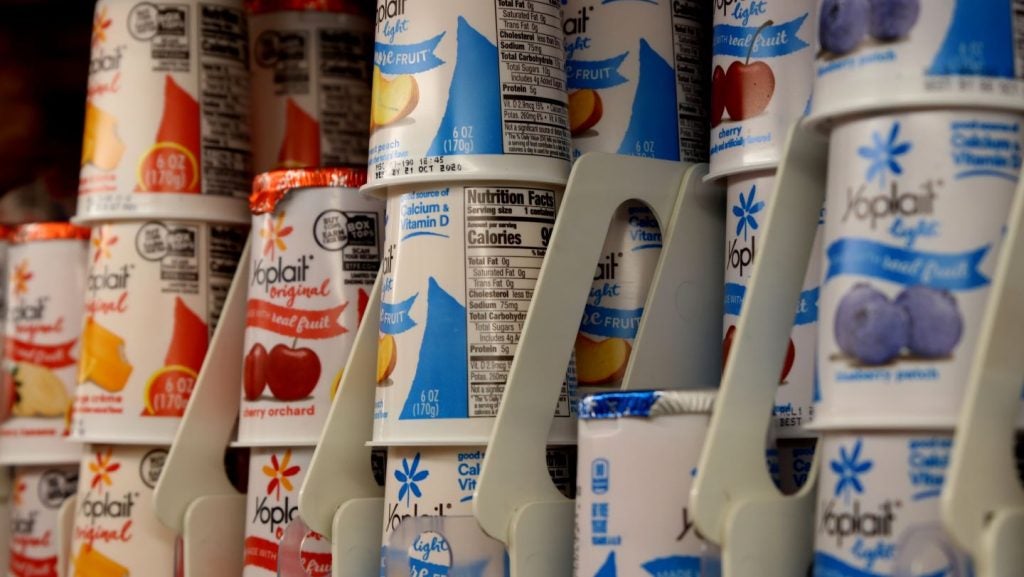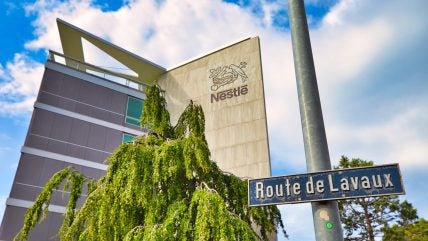
Nestlé is channeling more funds into advertising and marketing to recover volumes and gross margin lost during the pricing-led inflation period.
Outgoing CFO François-Xavier Roger, speaking at the Barclays Global Consumer Staples Conference in the US, said Nestlé plans to ramp up A&P investment by about 100 basis points in the back half of the year, which is likely to help return the key real internal growth metric (RIG) to positive territory.
A&P spend last year was 6.9% – “clearly a low level”, Roger said, noting Nestlé has now decided to disclose that metric going forward. “Given that we had some supply chain constraints last year there was no point in advertising.”
The plan is around brand building and innovation amid the ongoing SKU optimisation or rationalisation programme to “trim the tail” in favour of high margin and greater turnover lines in the portfolio.
“I’m much more interested in growing the head where we redirect these resources to improve our service level to really support high volume, high-margin product,” Roger explained. “This is really where we will generate much more value than cutting the tail, which always happens anyway.”
He added that Nestlé needs to get back to where it was in A&P investment a few years ago, with a further ramp-up in 2024 planned as well. The company’s total “consideration” for A&P and trend spend is “close” to SKr30m ($33.6m), Roger said, with a slant toward the latter given the 8% increase in pricing last year “after basically 15 to 20 years of no pricing”.
How well do you really know your competitors?
Access the most comprehensive Company Profiles on the market, powered by GlobalData. Save hours of research. Gain competitive edge.

Thank you!
Your download email will arrive shortly
Not ready to buy yet? Download a free sample
We are confident about the unique quality of our Company Profiles. However, we want you to make the most beneficial decision for your business, so we offer a free sample that you can download by submitting the below form
By GlobalDataGross margin
Nestlé is also in a better position to recover gross margin. The business incurred around SKr8bn in additional costs last year from increases in the cost of raw materials, packaging, transportation, energy and wages – “big, even for a company the size of Nestlé”, Roger admitted.
The extra costs had a 160 basis point negative impact on the gross margin, which has fallen 400 basis points over the past two years, he said.
Roger has previously indicated the target is to get back up to 50% but did not specify a timeframe at the Barclays’ presentation yesterday (6 September). It was 45.6% in the first half of the year, still below the 46% in the first six months of 2022.
“We will have more pricing than input-cost inflation this year, which means that our gross margin will start to increase, which has already been a reality in the first half of the year where we have increased in H1 2023 by about 120 basis points over the second half of last year,” Roger explained.
“It’s certainly not the time to talk about deflation [or] price decreases because of the significant decrease that we have seen in gross margin,” he said, providing some perspective on commodity inflation.
While the “agricultural commodities basket” for Nestlé, is about 25% lower than last year’s peak, it remains 30% higher than the five-year average and is up 40% from back in 2019, pre-pandemic, he said.
RIG, which strips out the effect of pricing from organic growth to reflect changes in volumes, is expected to turn positive in the second half. More likely in the fourth quarter because of one less trading day in the prior three months, Roger said. The metric was down 0.8% in the opening six months of 2023.
“We are confident of getting there in H2 this year and this is a transition period towards going back to the model that we had before with mid-single-digit growth, which we will get to in the future. I can’t tell you if it is ’24 or ’25,” he said. “We need to get to where we were before Covid, which is around 1% to 1.5%.”
Meat-free trajectory
Attending the Barclays event with Roger was Steven Presley, the executive vice president and CEO of Nestlé’s North America business division.
He was asked for some perspective on the trajectory of the plant-based category and singled out meat-free.
Presley said meat-analogues have had a “pretty hard fall” from previous growth rates, which had “skyrocketed”.
His view was: “There will always be some market in it. It’s more about how attractive is that portion of the market in terms of the meat analogues. That wasn’t where we over-indexed in our portfolio. And where we’ve seen really strong growth in plant-based is our plant-based beverage side, especially our plant-based creamers.
“But on the meat-analogue side, I do think it’ll settle at some point.”



